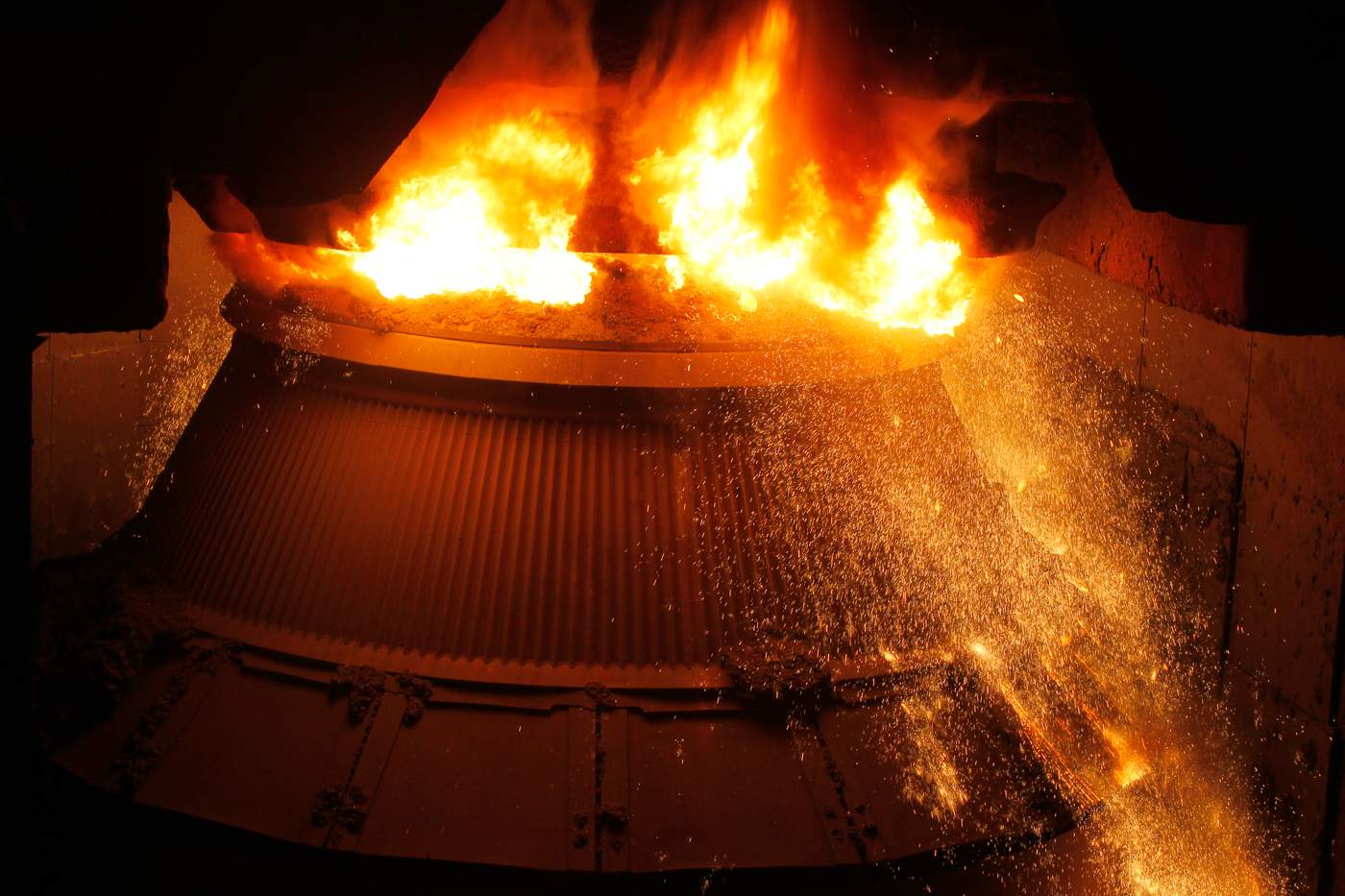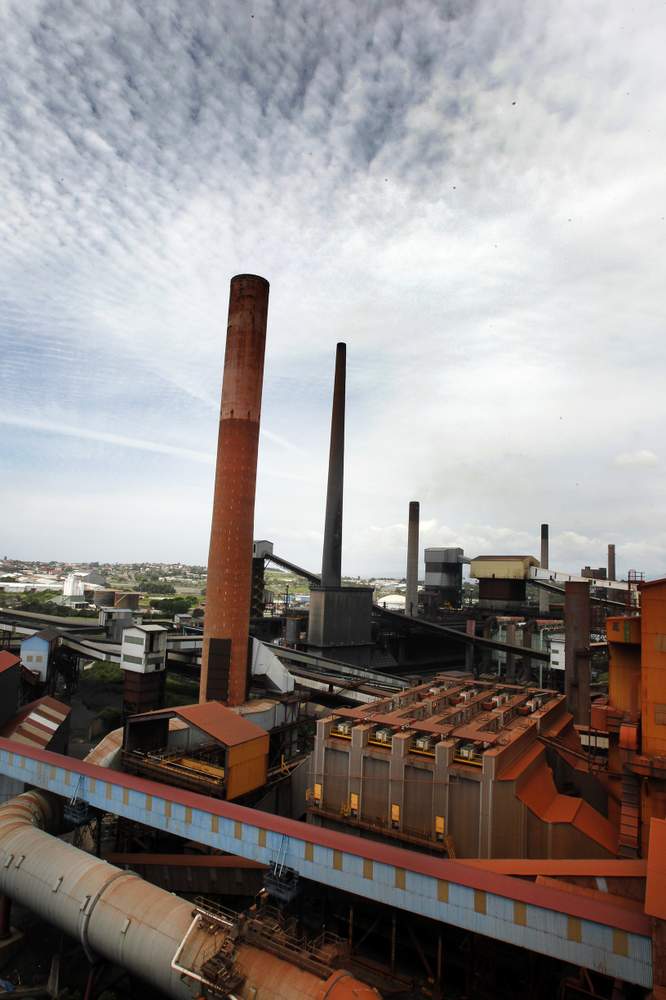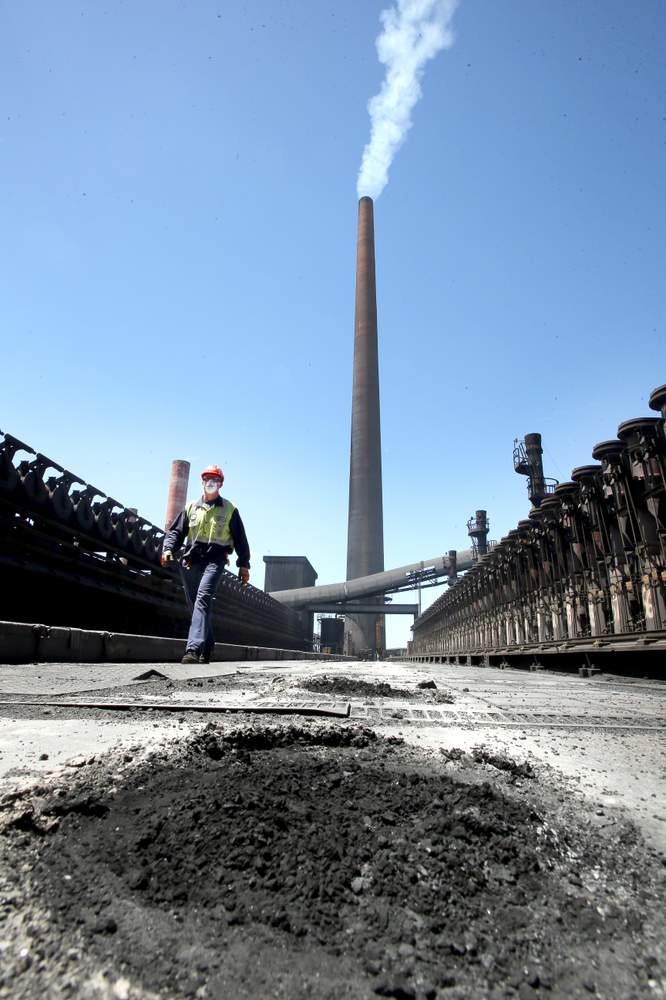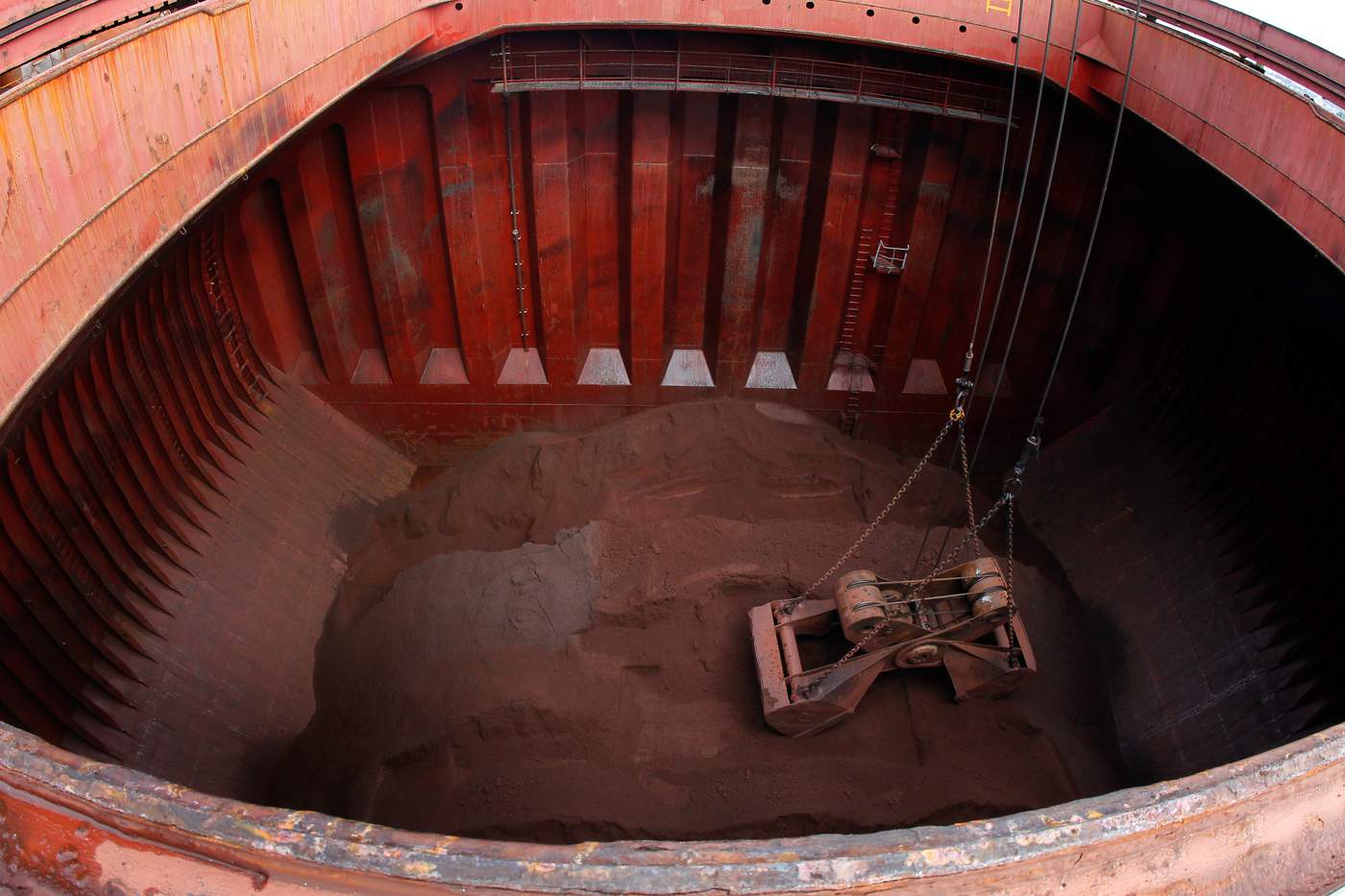That journey starts at the wharves and rail yards, where the ingredients to make iron, and not steel, arrive.
Iron ore, coal, limestone and other items arrive to be transformed into something else in the early stages of steel making.
The coal gets superheated in giant vertical ovens that resemble toasters on their sides, where it’s turned into coke.
The limestone is heated and crushed in a giant rotating tube on site, and turned into lime, which joins the smaller pieces of iron ore and gets turned into a product called sinter – which looks uncannily like the bitumen they used to surface roads.
These ingredients then meet up – often via a series of underground conveyor belts – with the larger chunks of iron ore at the blast furnace.
This 90-metre structure takes all the bits and pieces at the top and turns them into 1500 degree Celsius molten iron via a spectacular fireworks-like display.
The display impressed Jimmy Barnes so much that he decided to shoot the music video for his hit single Working Class Man there.
To get that molten iron out of the bottom of the blast furnace, a hole is drilled right in the side of the furnace and later resealed with clay.
Given the furnace runs non-stop 24-7, that means the furnace gets a lot of holes drilled into it.
After the blast furnace we progress to actually making steel, with the molten iron mixed with scrap steel (yep, they use old steel to make new steel) in a giant pot that gets heated with the help of oxygen shot in at more than twice the speed of sound.
The next stage includes some surprising ingredients – rice hulls and nail chips (the bits that get shaved off when they make the pointy end of nails).
These items are used in turning the molten steel into slabs as long as 13 metres and weighing as much as 20 tonnes.




